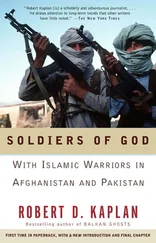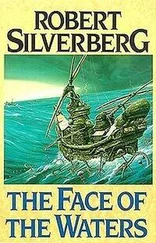9. See Lt. Col. Dave Grossman, On Killing: The Psychological Cost of Learning to Kill in War and Society (Boston: Little, Brown, 1995), esp. p. 256.
10. Richard Tregaskis, Guadalcanal Diary (New York: Random House, 1943); Bing West, The Village (New York: Pocket Books, 1972); and Harold G. Moore and Joseph L. Galloway, We Were Soldiers Once… and Young: Ia Drang, the Battle That Changed the War in Vietnam (New York: Random House, 1992).
11. Robert Sherrod, Tarawa: The Story of a Battle (New York: Duell, Sloan and Pearce, 1944), pp. 83, 109.
12. Ibid., pp. 147–51.
13. Malcolm Cowley, Introduction to The Portable Faulkner (New York: Viking, 1946).
CHAPTER 2—ALASKA TO THAILAND: THE ORGANIZING PRINCIPLE OF THE EARTH’S SURFACE
1. See Franklin Walker’s Foreword to Jack London, The Call of the Wild (New York: New American Library, 1960).
2. Robert W. Service, “The Shooting of Dan McGrew,” in Songs of a Sourdough (New York: Putnam, 1907).
3. Jack London, “Eight Factors of Literary Success” (1917); reprinted in The Portable Jack London, ed. Earle Labor (New York: Penguin, 1994).
4. Josef Joffe, “Hubs, Spokes, and Public Goods,” The National Interest, Fall 2002.
5. Henry Kissinger, Diplomacy (New York: Simon & Schuster, 1994), pp. 122, 125, 127–28.
6. Ralph Peters, New Glory: Expanding America’s Global Supremacy (New York: Sentinel, 2005), p. 267.
7. Hendrik Van Loon, The Fall of the Dutch Republic (Boston: Houghton Mifflin, 1924), p. 5; Otto Hintze, The Historical Essays (New York: Oxford University Press, 1975), pp. 213–15; Everett Carl Dolman, The Warrior State: How Military Organization Structures Politics (New York: Palgrave Macmillan, 2004), pp. 9, 85.
8. Eric Grove, The Future of Sea Power (Annapolis, Md.: Naval Institute Press, 1990), p. 187.
9. H. P. Willmott, Sea Warfare: Weapons, Tactics and Strategy (New York: Hippocrene, 1981), pp. 68–69.
10. Ibid., p. 87.
11. Grove, Future of Sea Power, pp. 47, 138, 139.
12. See John Henderson and Benjamin Reilly, “Dragon in Paradise: China’s Rising Star in Oceania,” The National Interest, Summer 2003.
13. See R. R. Keene, “Guam, ‘Wake Up and Die, Marine!’” Leatherneck, July 2004.
14. William Manchester, Goodbye, Darkness: A Memoir of the Pacific War (Boston: Little, Brown, 1979), pp. 385–86.
15. Victor Davis Hanson, Ripples of Battle: How Wars of the Past Still Determine How We Fight, How We Live, and How We Think (New York: Doubleday, 2003), pp. 31–32.
16. Manchester, Goodbye, Darkness, pp. 359–60.
17. See Robert Burns, “Pentagon to Close 35 Percent of Overseas Bases: ‘Forward Operating Sites’ to Replace Cold War–Era Bases,” Associated Press, Sept. 23, 2004.
18. See Robert D. Kaplan, Imperial Grunts: The American Military on the Ground (New York: Random House, 2005), ch. 4.
CHAPTER 3—A CIVILIZATION UNTO ITSELF, SWISHING THROUGH THE CRUSHING VOID
1. Owen Harries, “Harry Lee’s Story,” The National Interest, June 1999. See, too, Lee’s memoir: Lee Kuan Yew, The Singapore Story (New York: Harper-Collins, 1998) and its updated edition, From Third World to First: The Singapore Story, 1965–2000 (New York: HarperCollins, 2000).
2. Maria A. Ressa, Seeds of Terror: An Eyewitness Account of al-Qaeda’s Newest Center in Southeast Asia (New York: Free Press, 2003), p. 150.
3. Back jacket flap, Lee Kuan Yew, The Singapore Story (Singapore: Singapore Press Holdings, 1998).
4. Lord Jim (1900); Nostromo: A Tale of the Seaboard (1904).
5. Michael Vlahos, “Culture’s Mask: War and Change After Iraq,” Johns Hopkins University, Applied Physics Laboratory, Laurel, Md., 2004.
6. Quoted in The Green Wave and the Navy: The History of the USS Benfold (Wentachee, Wash.: Redrosebush, 1999), p. 262.
7. From brochure prepared by Charles R. Anderson of the U.S. Army Center of Military History.
8. See James D. Hornfischer, The Last Stand of the Tin Can Sailors: The Extraordinary World War II Story of the U.S. Navy’s Finest Hour (New York: Bantam, 2004).
CHAPTER 4—GEEKS WITH TATTOOS: THE MOST DRIVEN MEN I HAVE EVER KNOWN
1. See Robert D. Kaplan, Imperial Grunts: The American Military on the Ground (New York: Random House, 2005), ch. 8.
2. Jack Spencer, “Congress Should Restore Funding to Refuel Attack Submarines,” Heritage Foundation, Mar. 30, 2005.
3. Sherry Sontag and Christopher Drew, with Annette Lawrence Drew, Blind Man’s Bluff: The Untold Story of American Submarine Espionage (New York: PublicAffairs, 1998), pp. xv, xviii, 37–38, 251.
4. Ibid., p. 379; Spencer, “Congress Should Restore Funding.”
5. David Lague, “China Beefs Up Undersea Force,” The Wall Street Journal, Asia, Nov. 29, 2004.
6. Jules Verne, Twenty Thousand Leagues Under the Sea, trans. William Butcher (1870; New York: Oxford University Press, 1998), p. 68.
7. Ibid., p. 161, and Butcher’s Introduction, p. xxii, in which he refers to the interpretation of Verne by the French scholar Roland Barthes.
8. Jack London, The Sea Wolf (1904; New York: Bantam, 1960), p. 68.
9. Ibid., p. 17.
CHAPTER 5—NATO’S RAGGED SOUTHERN EDGE
1. Richard F. Burton, Wanderings in West Africa (1863; Mineola, N.Y.: Dover, 1991), pp. 135–36.
2. See William Langewiesche, Sahara Unveiled: A Journey Across the Desert (New York: Pantheon, 1996), pp. 129–31.
3. Alistair Horne, A Savage War of Peace: Algeria, 1954–1962 (London: Macmillan, 1977), p. 44.
CHAPTER 6—THE GURKHA STANDARD
1. Samuel Johnson, A Journey to the Western Islands of Scotland (1775; Edinburgh: Canongate, 1996), p. 81.
2. Robert Gersony, “Sowing the Wind: History and Dynamics of the Maoist Revolt in Nepal’s Rapti Hills,” submitted to Mercy Corps International in 2003, pp. 71–72. See, too, Thomas A. Marks, “Insurgency in Nepal,” U.S. Army War College, Carlisle Barracks, Pa., 2003.
3. See Robert D. Kaplan, Imperial Grunts: The American Military on the Ground (New York: Random House, 2005).
4. For some of the material in these paragraphs, see Byron Farwell, The Gurkhas (New York: Norton, 1984, 1990), pp. 12, 14, 28–29, 77–78.
5. A. E. Housman, “Epitaph on an Army of Mercenaries,” 1914.
6. See, too, John Masters, Bugles and a Tiger (New York: Viking, 1956).
7. Farwell, The Gurkhas, pp. 52, 58, 84.
8. See Kaplan, Imperial Grunts, ch. 3.
9. J. P. Cross, The Call of Nepal (Kathmandu: Bibliotheca Himalayica, 1996), p. 14.
10. J. P. Cross, Jungle Warfare (Dehra Dun, India: English Book Depot, 1992), p. 42.
1. See Robert D. Kaplan, Imperial Grunts: The American Military on the Ground (New York: Random House, 2005), ch. 8.
2. Samuel Huntington, Political Order in Changing Societies (New Haven, Conn.: Yale University Press, 1968).
3. William Manchester, Goodbye, Darkness: A Memoir of the Pacific War (Boston: Little, Brown, 1979), pp. 374, 391–95.
4. Brig. Gen. James E. Shelton (Ret.), The Beast Was Out There: The 28th Infantry Black Lions and the Battle of Ong Thanh, Vietnam, October 1967 (Chicago: Cantigny Military History Series, 2002), p. 217.
Читать дальше












